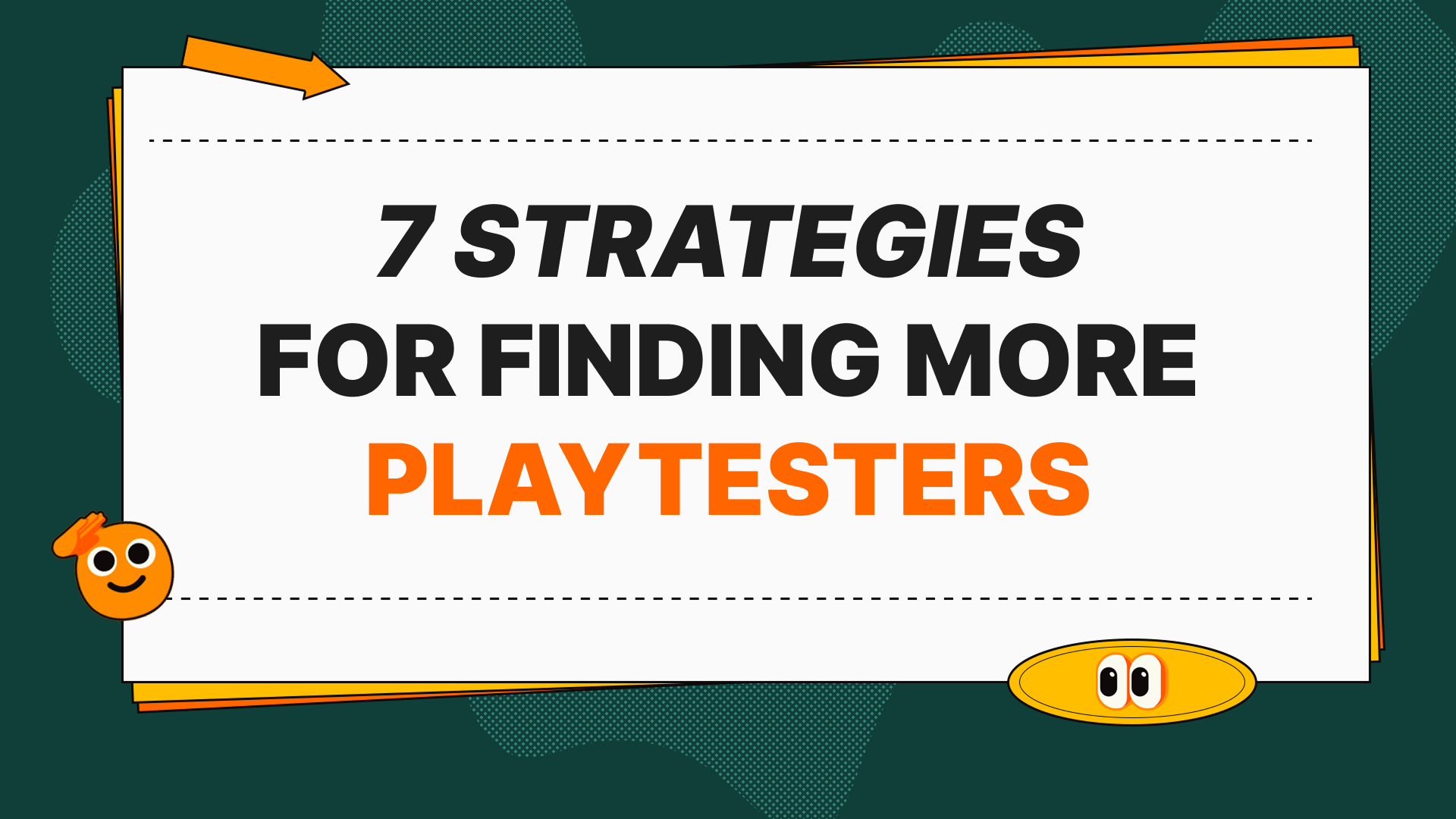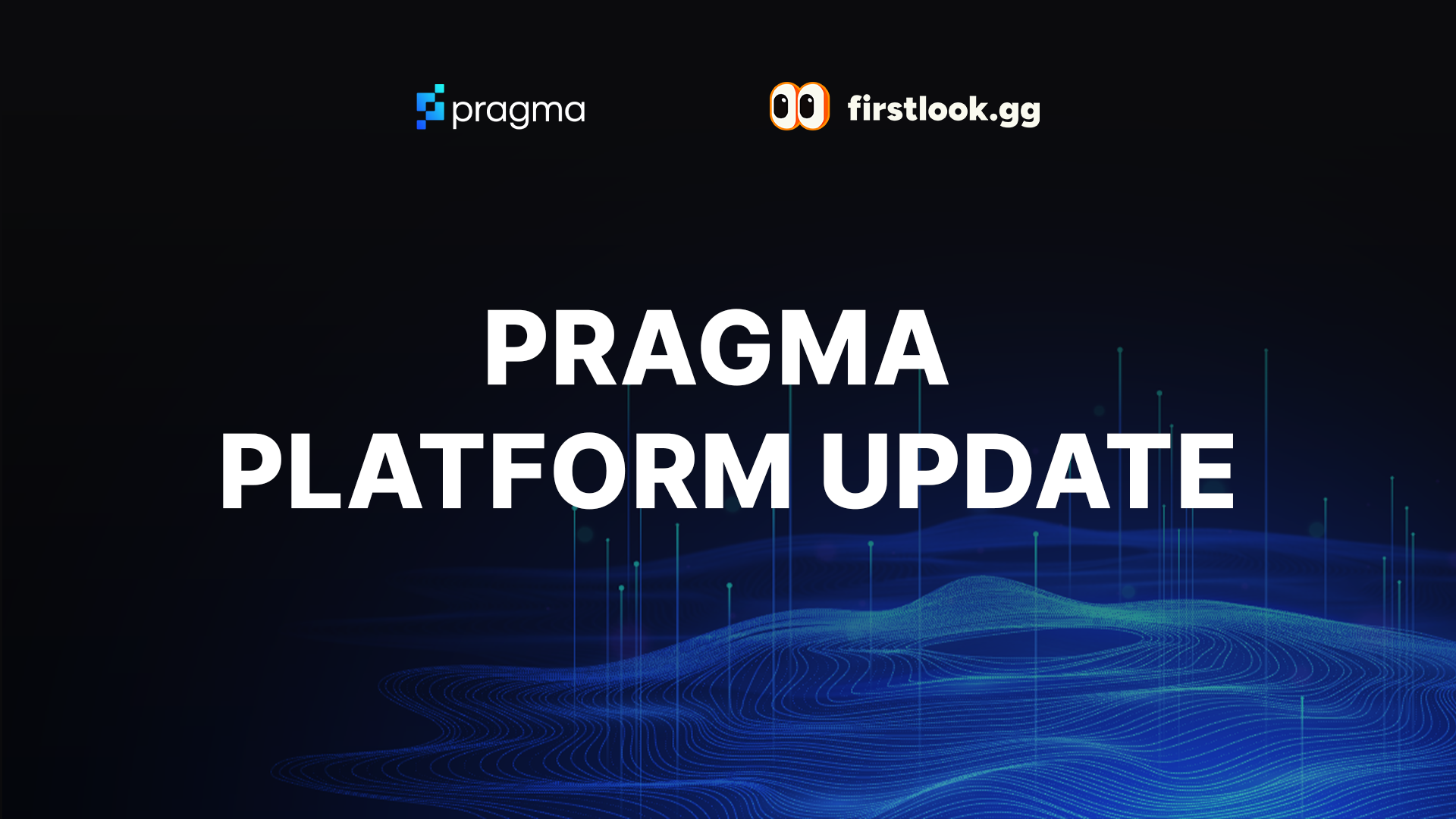• The challenge: Studios need playtesters who provide meaningful feedback AND become advocates. The wrong approach floods Discord with noise. The right approach builds a community that co-creates alongside you.
• Who to recruit: Your playtesters should reflect your actual target audience. Representative testing delivers actionable insights that improve user experience, reduce post-launch fixes, and increase retention.
• Seven strategies: Identify your ideal tester audience through clear personas. Leverage existing Discord, Reddit, and social followers. Post on playtesting communities like r/playtesting and FirstLook's network. Build referral systems where testers invite friends. Run hyper-targeted ads on Meta and YouTube. Automate feedback loops with in-game surveys (30-40% response rates). Create frictionless onboarding with one-click NDAs.
• Avoid common mistakes: Don't test only with friends. Don't ignore submitted feedback; nothing kills motivation faster than feeling unheard.
--
In 2025, studios face a critical challenge of recruiting playtesters who will provide meaningful feedback AND become passionate advocates for your game. The wrong approach floods your Discord with noise. The right approach builds a community that co-creates alongside you.
Modern playtester recruitment requires solving three interconnected challenges.
- •Targeting players who genuinely match your game's audience
- •Reaching them without undermining your actual launch impact
- •Scaling beyond your personal network when those first few dozen testers tap out
This guide delivers seven proven strategies to find playtesters who represent real player sentiment—not just the loudest voices in the room.
Who Is a Playtester and Why Do You Need Them?
A playtester is an individual who plays a game during its development cycle to identify bugs, evaluate game mechanics, assess user experience, and provide feedback before public release. Unlike quality assurance testers who focus on technical issues, playtesters evaluate from a player's perspective, offering insights on enjoyment, difficulty, clarity, and engagement.
The right playtesters serve as your early warning system. They catch game-breaking bugs, reveal confusing mechanics, validate your vision, and predict how your target audience will respond at launch. Without them, studios discover critical issues only after negative reviews damage their reputation and sales.
Your playtesters should reflect your actual target audience. Representative testing delivers actionable insights that improve user experience, reduce post-launch fixes, and increase player retention.
The playtesting journey progresses through distinct phases:
- •Friends and Family (10s of testers)
- •Closed Playtests/Closed Alpha (100 - low 1000s)
- •Public Playtest/Public Demo (scaling up)
- •Early Access (major launch, as big as possible)
- •Full Launch/1.0 (as big as possible)
Each phase requires different recruitment strategies, but all demand finding players who will become invested in your game's success.
What Motivates People to Become Playtesters?
Players volunteer for three reasons. They want to improve games they care about, earn recognition and rewards, or access exclusive early content.
Understanding these motivations shapes successful recruitment. Feedback-driven testers want meaningful involvement in development and to provide detailed insights. Reward-driven testers respond to recognition like exclusive Discord roles and public acknowledgment. Experience-driven testers crave early access and insider status, driving word-of-mouth growth.
The most effective approach treats recruitment like community building:
- •Implement referral systems where testers invite friends, creating viral loops of engaged players
- •Prioritize friend groups in waitlist queues to kickstart community formation
- •Use gamification with levels, badges, and leaderboards to transform one-time testers into long-term contributors
Show playtesters their impact by highlighting how feedback shaped development decisions. Balance public recognition with NDA confidentiality by crediting testers in appropriate channels and post-launch materials.
7 Steps to Find and Recruit More Playtesters
Step 1: Identify Your Ideal Tester Audience
Why this matters: Testing with the wrong audience generates feedback that doesn't represent your actual player base, leading to misguided development decisions.
Segment playtesters based on experience level, genre preferences, and skill. Develop clear personas that define motivations and expected contributions. Use customizable signup flows and analytics to match testers to your specific needs.
Step 2: Leverage Your Existing Community
Why this matters: Your current followers are already invested in your success and more likely to provide thoughtful, constructive feedback than cold recruits.
Convert Discord followers, Reddit subscribers, and social media audiences into active testers. Your existing community already cares about your game—they're your highest-quality recruitment pool.
Incentivize participation through sneak previews, exclusive content, and development insights. Feature testers in updates to build pride and visibility. Set up Discord integration to automatically assign roles and streamline community management.
Step 3: Post on Playtesting and Beta Communities
Why this matters: Playtesting communities attract players who actively seek testing opportunities and understand how to provide useful feedback.
Target specialized recruitment platforms where motivated testers congregate. Key communities include subreddits like r/playtesting and r/gamedev, FirstLook’s built-in playtester network, and Itch.io devlogs.
Customize your messaging for each community's tone. Reddit users respond to authentic development stories. Itch.io audiences want creative indie projects. Platform-specific approaches yield better results than generic copy-paste recruitment.
Step 4: Build a Referral Incentive System
Why this matters: Friend-referred testers arrive pre-vetted with genuine interest, creating higher-quality feedback and stronger community bonds from day one.
Current testers are your best recruiters. Let them bring new players through invite rewards, referral links, and squad-based onboarding.
Incentivize referrals with early access expansions, public credits, or exclusive digital rewards. Friend-referred testers arrive pre-vetted and highly motivated, often resulting in 10-25% increases in overall signups.
Step 5: Use Targeted Ads and Retargeting
Why this matters: Broad advertising wastes budget on uninterested players while precise targeting reaches people who will actually engage with your game.
Run hyper-targeted campaigns focused on your niche audience. Meta Ads, YouTube pre-rolls, and Reddit promotions work when precisely targeted to your game's genre and demographic.
Track click-through rates and signup funnels to refine ad ROI. Focus on metrics that reveal which acquisition channels deliver the most engaged testers, not just the highest volume.
Step 6: Automate Feedback Loops and Communication
Why this matters: Manual feedback management becomes overwhelming at scale, causing you to miss critical patterns buried in hundreds of responses.
Replace spreadsheet chaos with structured systems. Automate email sequences for onboarding and follow-ups. Organize feedback into actionable insights your development and marketing teams can actually use.
Meet testers where they are with in-game surveys (which typically see 30-40% response rates), Discord polls, and web forms.
Step 7: Create Frictionless Onboarding
Why this matters: Every additional friction point in your onboarding process loses potential testers who would have provided valuable feedback.
Minimize barriers between signup and active participation. Enable one-click NDA signing. Get testers into Discord, Steam, and your email list quickly. Every additional step increases dropoff.
Streamline onboarding with customizable flows, automated account connections, and mobile-friendly experiences that make joining playtests feel polished and professional, not amateur. Learn how to manage Steam keys effectively to ensure smooth distribution across platforms.
Common Mistakes to Avoid
- •Don't test only with friends or narrow groups. Homogeneous feedback creates blind spots.
- •Don't overlook tester fatigue. Rotate active testers and recognize contributions to maintain engagement.
- •Don't ignore submitted feedback. Nothing kills motivation faster than feeling unheard.
- •Don't forget to publicly credit testers post-launch. Acknowledgment turns testers into lifelong advocates.
Measuring Playtest Success
Success isn't just about how many playtesters you recruit. Focus on metrics that reveal quality and engagement:
- •Participation rates: Are testers actually playing and providing feedback?
- •Feedback completeness: Are responses detailed and actionable?
- •Feedback quality: Does feedback reveal genuine insights versus surface-level reactions?
- •Retention across test phases: Do testers stick around for multiple sessions?
- •Feedback ROI: Is the insight gained worth the resources invested?
Meet testers where they are:
- •Offer surveys in-game for maximum response rates (30-40% average)
- •Deploy Discord polls for community-wide sentiment
- •Use web forms for detailed onboarding questionnaires
Create smooth onboarding flows that minimize dropoff:
- •Enable one-click NDA signing
- •Get testers into Discord, Steam, and email quickly
- •Reduce barriers between signup and active participation
The challenge? Manually tracking these metrics across fragmented platforms becomes impossible at scale. One vocal player can seem like a trend when it's just noise. You need unified visibility to see actual patterns.
How FirstLook Helps You Execute These Strategies
FirstLook consolidates every step of the playtester recruitment and management process into one platform:
- •Unified Player Dashboard: Connect player identities across Discord, Steam, and in-game to see the complete picture. Track participation rates, feedback quality, and engagement patterns without juggling spreadsheets.
- •Customizable Signup Flows: Ask the right questions upfront, then automatically segment responses so you can invite the most relevant players first. Create different flows for content creators, investors, or standard playtesters.
- •Built-in Referral System: Implement Gmail-style invite flows where testers receive limited invites that create viral loops. Studios using FirstLook's referral mechanisms see 10-25% increases in overall signups.
- •Multi-Channel Surveys: Deploy surveys in-game (30-40% average response rates), via Discord, or through web links. Automatically associate responses with player identities for deeper analysis.
- •Sentiment Analysis: Track community mood across Discord channels to identify trends beyond individual loud voices. See what's really happening in your community, not just what's loudest.
- •Frictionless Onboarding: One-click NDA signing, automated Discord role assignment, and streamlined key distribution get testers playing faster with less dropoff.
FirstLook turns scattered player data into actionable insights, helping studios see patterns that predict market response and make decisions with certainty.
Start Building Your Playtester Community Today
Successful playtester recruitment focuses on quality relationships over raw numbers. The right players provide honest feedback, recruit their friends, and become your game's earliest advocates. The strategies above work, but they require unified systems to execute at scale.
FirstLook helps studios understand, engage, and grow their player communities by consolidating recruitment, onboarding, feedback collection, and sentiment analysis into one platform. From customizable signup flows to unified analytics across Discord and Steam, FirstLook turns scattered player data into actionable insights that predict market response.
Start your free trial with FirstLook and join studios that truly understand their players.






